Homes of the Great Wool Industrialists of Mazamet
I’ve been trying to map them out and count them. There are two books that have been written about these houses, but I haven’t yet been able to get my hands on either of them. Meanwhile, walking through town and with the help of Google Earth, I’ve been able to identify 12 (including our own.) Two of them are now boutique hotels, so we can peek inside.
The most unusual of the houses is no doubt the one that is now called La Villa de Mazamet. It used to be named Maison Farenc and was built in the mid 1930’s. Mr. Farenc wasn’t actually a wool industrialist, he was the accountant of the wool industrialists. His office was on the ground floor. Now the house is owned by Peter Friend and Mark Barber and is open to the public as a small and very chic hotel with superb food. You can see the interiors on their website. The architecture is an unusual mix of various styles.
Around the corner from La Villa, there are two grand houses facing the park. They’re built in a quintessentially French style, with Mansard roofs. The larger of the two is covered in ivy. It’s known as Maison Reberga
The other is actually the first house that got us interested in buying in Mazamet. At the time we were still in Spain and we saw an advertisement for it in a property magazine. The price was around US$700,000 seven or eight years ago, which seemed like a bargain. It’s the house that made us consider the possibility that if we sold in Spain and bought in France we’d be a whole lot better off financially. But the house was sold quite quickly to an author.
The following year, another classic house came on the market. It happens to be on the same street we live on today. We both liked it very much, although the layout didn’t suit us very well. The reception areas are broken up into many small rooms. We prefer less rooms but on a grander scale. It also sold very quickly.
The next house is also of the classical Mansard variety. It sets itself apart in the quantity of detail. Everything is decorated, roof, windows, doors. It was built in 1850 and originally belonged to the same family as our house. Now it’s known as Maison Vialars, and they’re our next-door neighbours. They own two chickens that roam around their garden (I know because I can see them from my bedroom window.)
There are three that are all near each other and in the same architectural style that was popular (mainly) in Paris at the end of the 19th century. They move away from the traditional rectangular layout and morph into something more complex. I don’t know anything about their history yet, once I do, I’ll post more information.
Now we get to the style I prefer. There are three neo-classical homes in town. The grandest of the three is very much a mystery. I know it’s listed as a national monument and known as the Château de Lagoutine. It was designed by the Count of Milhau. You can barely catch a glimpse of it from the street. It’s nestled in a huge garden of over 6000m2- and a private home which is not open to the public.
I did find a good picture of it online:
Two of the other neoclassical homes, you probably remember, were built by the same family and are on the same the street. The first was built in 1850 and has been beautifully restored (Next to the Temple.) It’s got a very grand facade, but is only one room deep. There’s a later extension to the back.
The granddaughter of the owner of this house above was obviously enamoured by the style because she had it recreated in grander proportions when she married an American whose family was also in the wool trading industry. They were the Stanton’s, as in President Lincoln’s secretary of war. This revised version is our house, which by now you’re probably tired of seeing.
Something quite interesting about it architecturally is the design of the facades. Three are Palladian, and then the north facing side which is where the main entrance is has a parapet which hides the roof, giving the impression the house has a flat roof.
That facade brings us to the last of the neoclassical houses- because it’s also got a parapet hiding the roof. It was known as Maison Sarrat and today is one of the boutique hotels I mentioned. It’s been meticulously restored. Interestingly, the interiors were, like our house, done by Maison Jansen. You can see detailed pictures here.

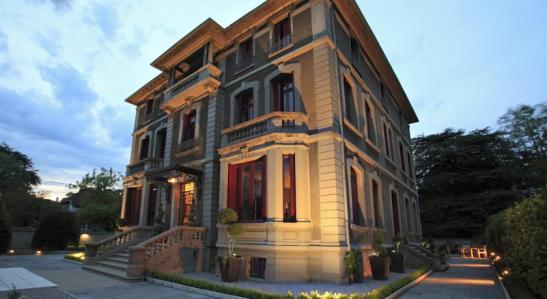
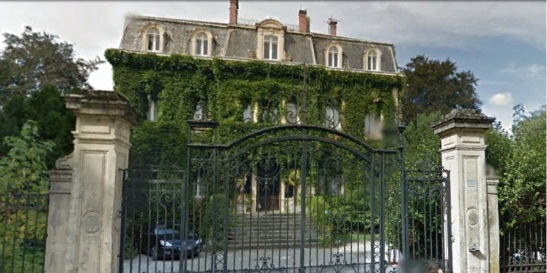
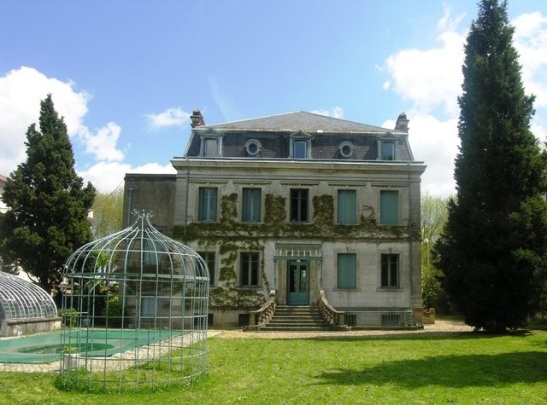

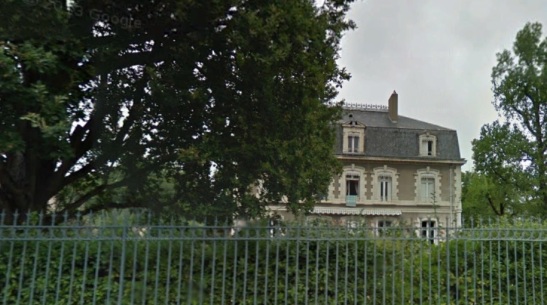



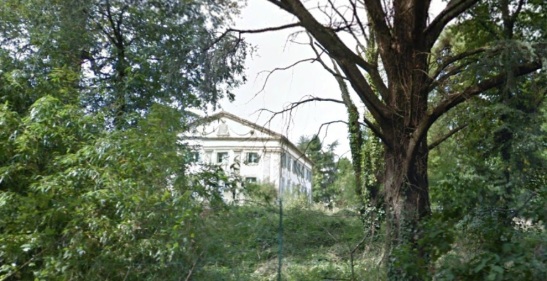
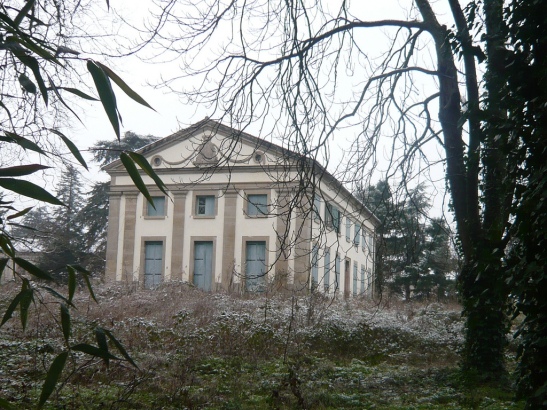

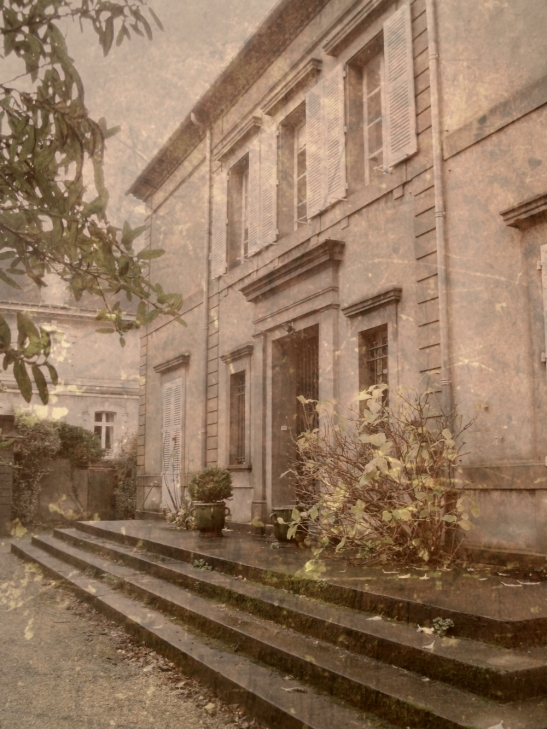
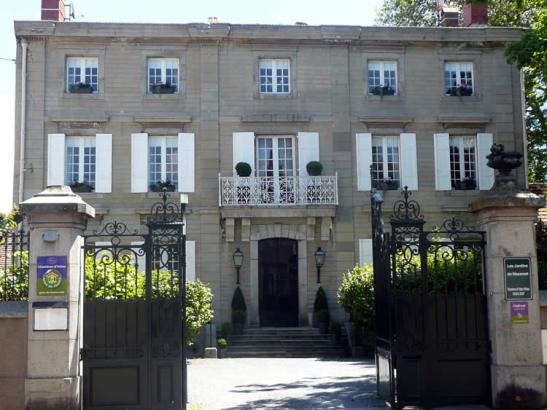
Plenty of room for some Syrian families.
LikeLiked by 1 person
France and Spain have whole abandoned villages. Everywhere you turn in France there’s a chateau. And I’d be willing to bet that in exchange for a room a refugee or two wouldn’t be averse to giving the owners some much needed help with the upkeep. I believe there are around 16,000 castles, and over three times that for grand houses like ours.
I wouldn’t mind at all making the staff apartment available to a refugee family. Now whether a Muslim family would be okay with a gay household is another story…
LikeLiked by 2 people
What ARE you going to do with all those staff bedrooms? Run a hostel?
LikeLike
I’m saving that as a future project. I’m thinking a totally self-contained guest suite. Living room, kitchen, a grand bathroom and a large bedroom. In the last house we had that and it was really wonderful; it completely removes all the pressure from hosting people as they have their own space.
LikeLike
Two boutique hotels in Mazamet….what is drawing their clients?
LikeLike
Two boutique hotels and two not-so-nice ones.
Mostly I think it’s a beautiful region and it’s a good stopping point if someone is travelling from Barcelona to anywhere else in Europe.
We’re about halfway between Toulouse and Carcassone.
LikeLiked by 1 person
I must take a proper look..
LikeLike
That’s quite a detailed history of the other houses and a good glimpse of them.If you ever find the missing details I wonder if you’d consider doing a book on them. By offering details of the changes the houses have undergone, to things like the boutique hotels,you may have a few interested parties. Perhaps within the hotel’s visitors.
Well done on the research so far.
Hugs
LikeLiked by 1 person
Yes! You’d be the perfect person to write such a book, and it would not only be of historic value, but it might also help promote the region as well.
LikeLike
Maybe one day…
LikeLike
lol – Go on, you know you want to.
LikeLike
that’s quite a neighbourhood
LikeLiked by 1 person
I never get tired of pictures of beautiful architecture.
LikeLike
Nothing like some self-indulgent research. You mentioned the chickens. Are there any restrictions on animals or the equivalent of finca rights?
LikeLike
When I say we’re in rural France, I mean seriously & professionally rural. Two blocks down there are cows and a donkey. The dogs are enchanted by the donkey, but don’t like anything larger…
LikeLike